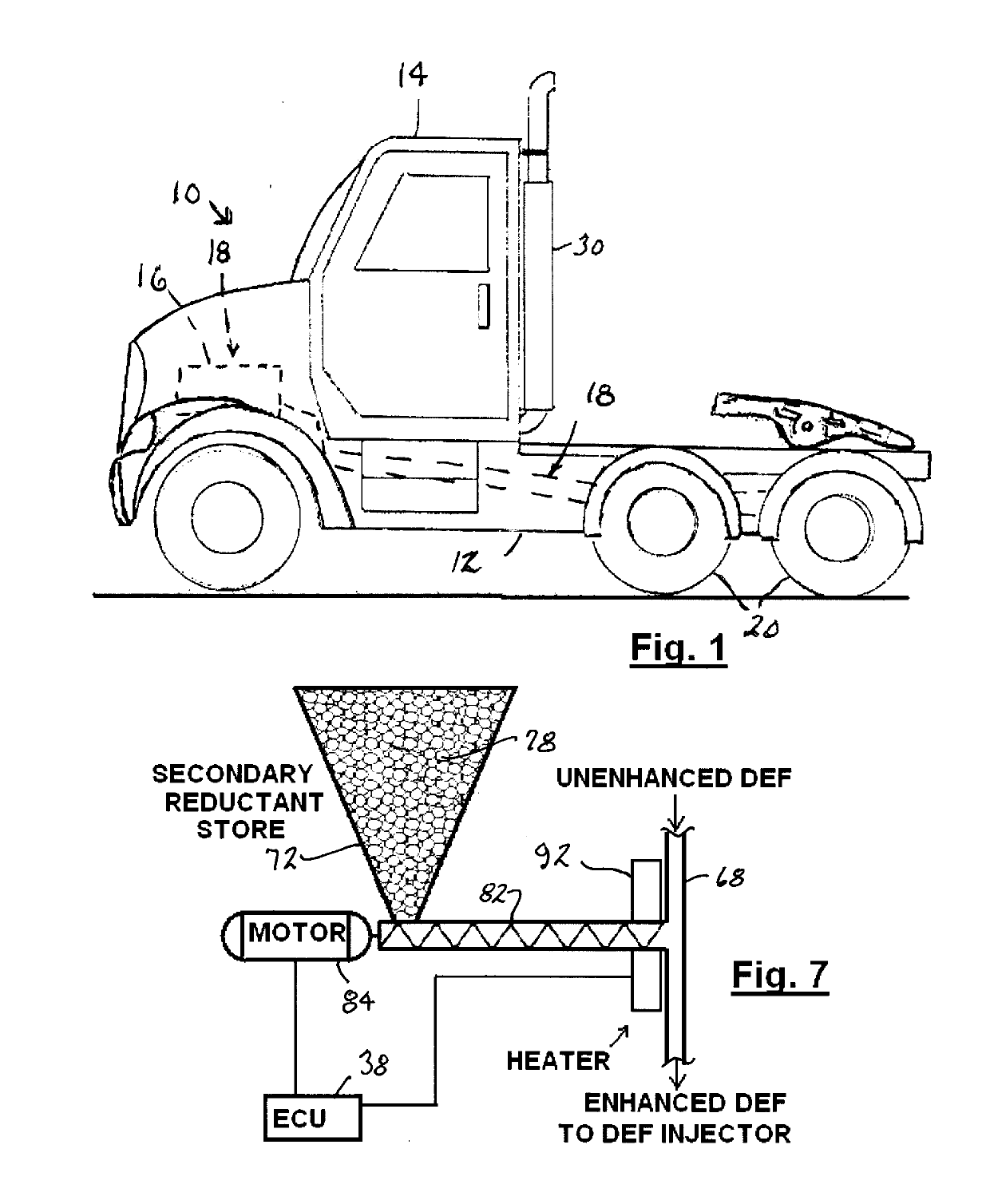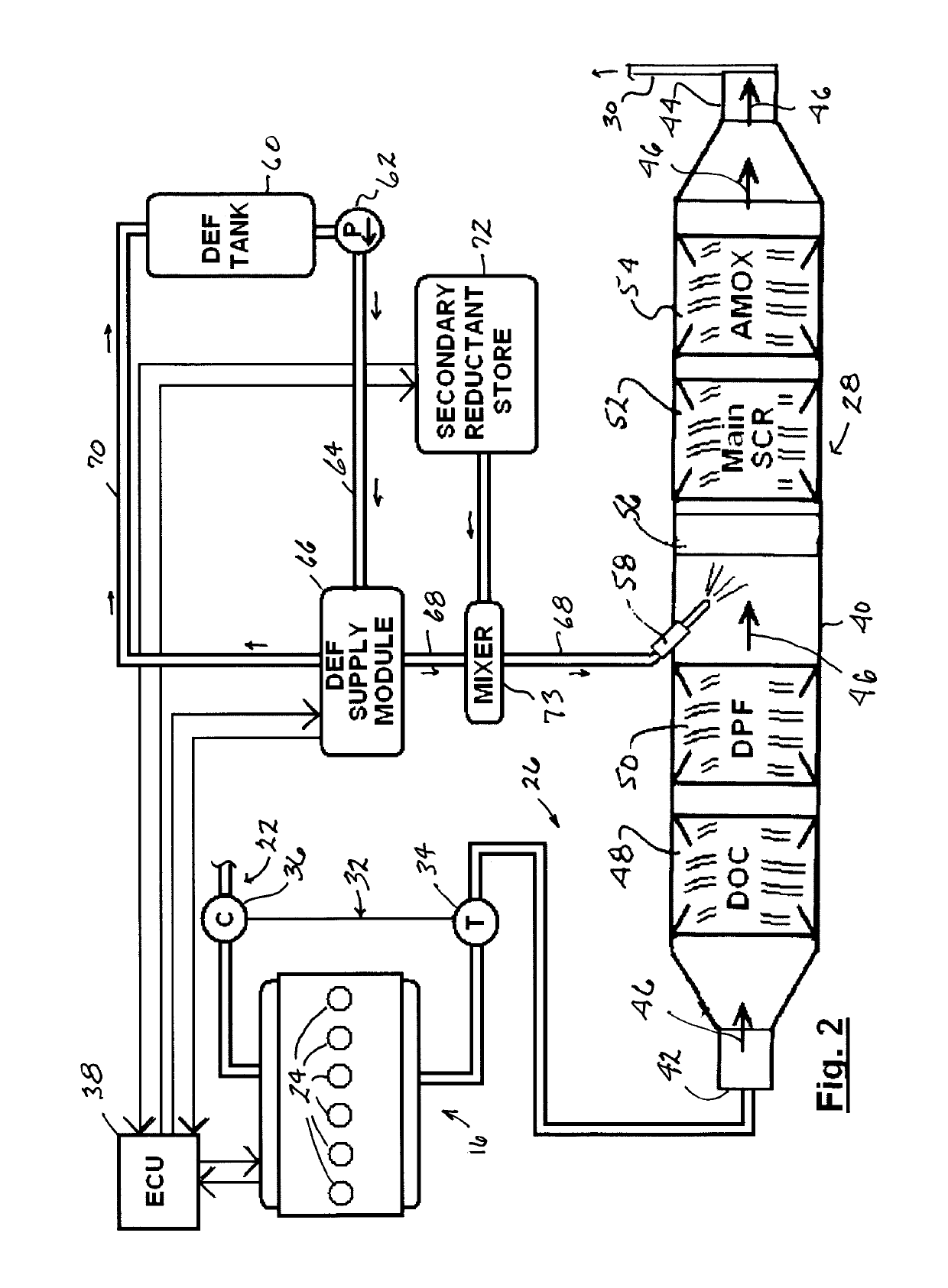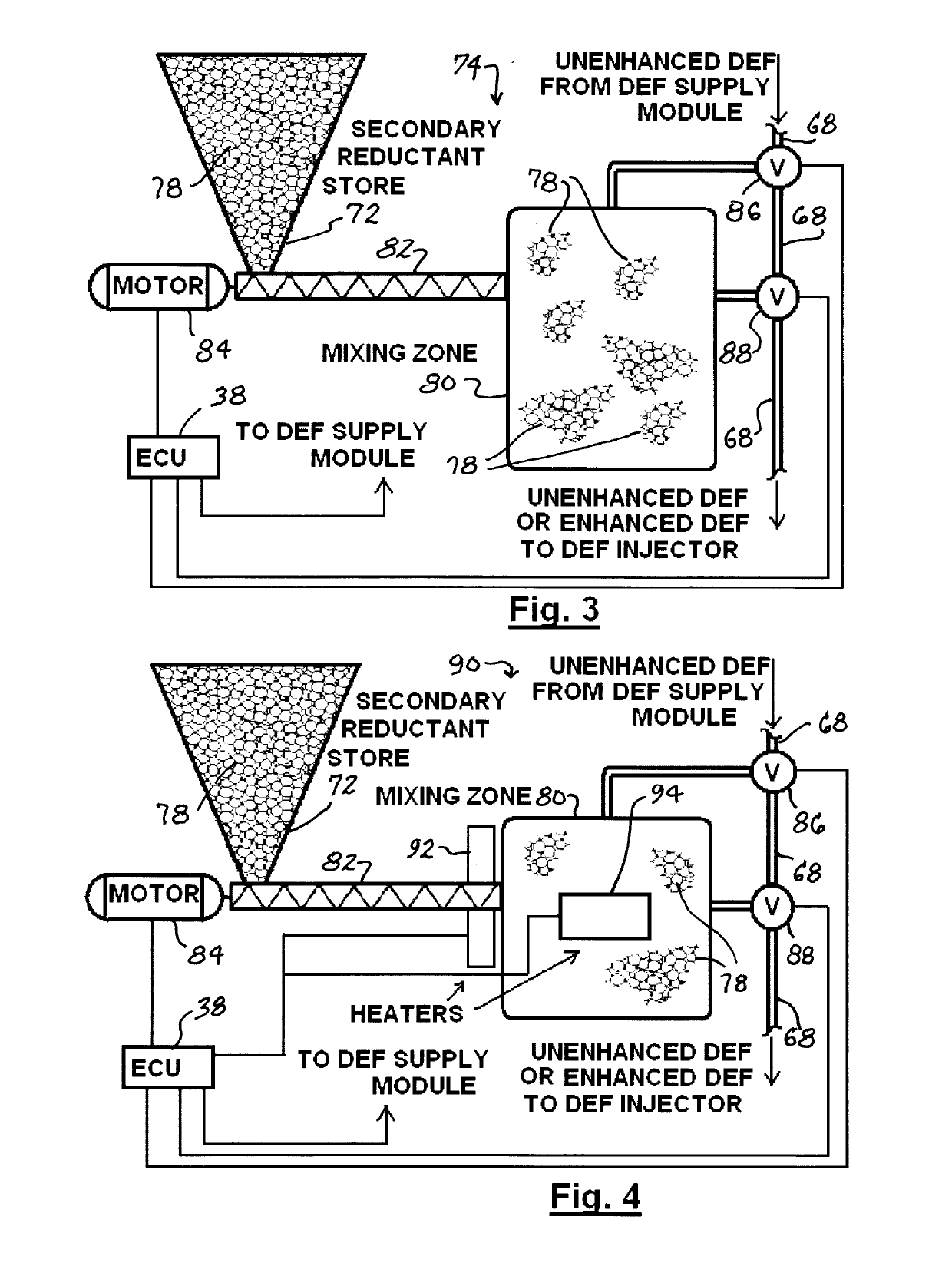ENGINE OUT NOx REDUCTION USING ENHANCED DEF
- Summary
- Abstract
- Description
- Claims
- Application Information
AI Technical Summary
Benefits of technology
Problems solved by technology
Method used
Image
Examples
first embodiment
[0039]FIG. 3 shows mixing equipment 74 for creating enhanced DEF. Mixing equipment 74 comprises a secondary reactant store 72 containing a multitude of prills 78 of secondary reactant and a mixing zone 80 where prills 78 and standard DEF mix to create enhanced DEF. A prill comprises a urea sphere having a diameter of approximately 1.65 mm. Although other forms of solid urea may be used, the use of prills of known size provides a convenient way to accurately measure quantity of urea being mixed with unenhanced DEF to create enhanced DEF.
[0040]Mixing zone 80 comprises an interior of a mixing chamber. Prills 78 are conveyed from store 76 into the interior of the mixing chamber by a screw augur conveyor 82 operated by an electric motor 84. Speed at which conveyor 82 operates determines the rate at which prills 78 are being added to unenhanced DEF, and hence control of conveyor speed is one factor in controlling urea concentration of enhanced DEF. Quantity of unenhanced DEF entering the ...
second embodiment
[0045]FIG. 4 shows mixing equipment 90 for creating enhanced DEF. In all material respects of construction and operation, mixing equipment 90 is like mixing equipment 74, but further comprises a first heater 92 and a second heater 94, each of which is electrically operated. First heater 92 is disposed to begin heating prills 78 as they approach mixing zone 80 while second heater heats prills 78 and DEF within mixing zone 80. Each heater is independently controlled by ECU 38 to operate at its own selected temperature for its own selected length of time. Heating of prills at a location remote from the location at which prills enter conveyor 82 assures accuracy in quantity of urea being mixed with unenhanced DEF.
third embodiment
[0046]FIG. 5 shows mixing equipment 96 for creating enhanced DEF. In all material respects of construction and operation, mixing equipment 90 is like mixing equipment 74, but further comprises an agitator 98 for agitating mixture of prills and unenhanced DEF within mixing zone 80. Agitator 98 is operated by an electric motor 100 controlled by ECU 38.
[0047]FIG. 6 shows a fourth embodiment of mixing equipment 102 for creating enhanced DEF. In all material respects of construction and operation, mixing equipment 102 is like mixing equipment 74, but combines the heaters 92, 94 of the second embodiment with the agitator 98 and motor 100 of the third embodiment.
PUM
 Login to View More
Login to View More Abstract
Description
Claims
Application Information
 Login to View More
Login to View More - R&D
- Intellectual Property
- Life Sciences
- Materials
- Tech Scout
- Unparalleled Data Quality
- Higher Quality Content
- 60% Fewer Hallucinations
Browse by: Latest US Patents, China's latest patents, Technical Efficacy Thesaurus, Application Domain, Technology Topic, Popular Technical Reports.
© 2025 PatSnap. All rights reserved.Legal|Privacy policy|Modern Slavery Act Transparency Statement|Sitemap|About US| Contact US: help@patsnap.com



